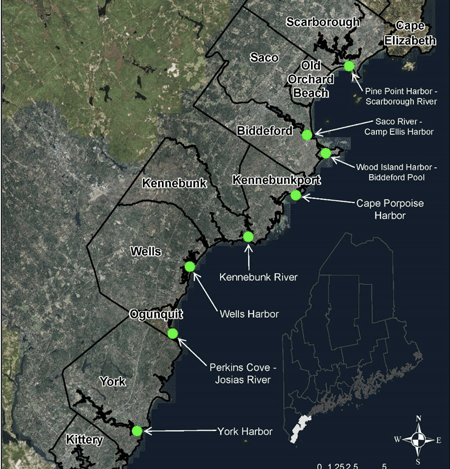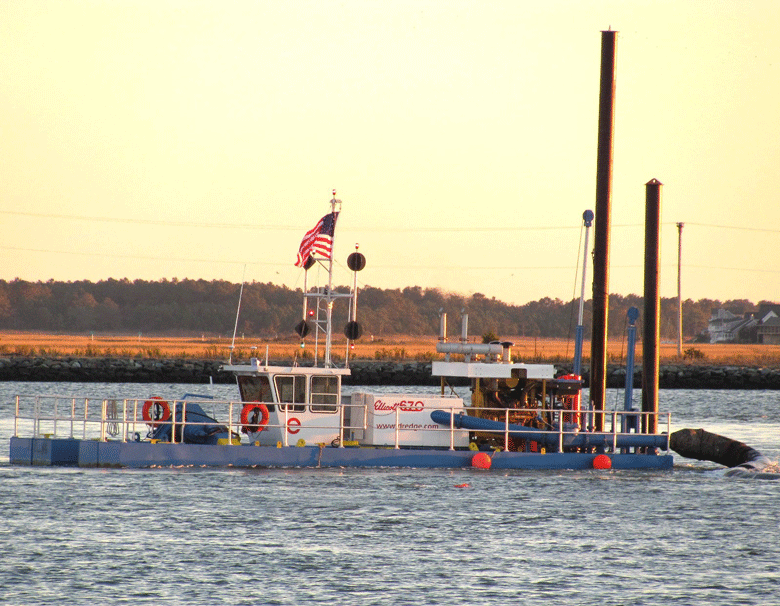Coastal communities in Southern Maine stand to benefit from a new dredge that will be used to improve navigational channels and replenish beaches from Kittery to Scarborough and possibly beyond.
The York County Commission has given the green light to purchase an 86-foot suction dredge using $1.54 million in federal funding made available through the American Rescue Plan Act. If all goes according to plan, the dredge should arrive in spring and be in operation for the 2024-25 dredging season, if not sooner.
The dredge would be managed through a newly created nonprofit organization called the Southern Maine Dredge Authority and would be rented on a “pay-as-you-go” system as dredging projects arise. In time, the goal is to have the dredge be self-sustaining from revenues generated from dredging projects for municipalities and possibly boatyards and other privately owned properties, said Al Sicard, chairman of the York County Commission.
The dredge will be … equipped with a rotating cutter head that loosens and lifts sand…
“This is a once-in-a-lifetime opportunity,” Sicard said. “This is huge for communities up and down the coast.”
Ten federal navigational channels in the region have been dredged a total of 120 times between 1949 and 2018, generating nearly 3.5 million cubic yards of material, according to a 2018 study by the Southern Maine Planning and Development Commission that examined the feasibility of purchasing and operating hydraulic dredge equipment in southern Maine. Those navigational channels include places such as York Harbor, Wells Harbor, the Josias River in Ogunquit, the Kennebunk River, and Pine Point Harbor in Scarborough.
But the driving force behind the initiative to buy a regional dredge was Save our Shores Saco Bay, an organization that has advocated for the need for ongoing beach replenishment at Camp Ellis, a small shoreside community in Saco whose beach has been decimated by shoreline erosion for more than a century.
A dredge is a critical tool for moving sand on a regular basis to reinforce the shoreline at Camp Ellis and other communities, much like places do in Cape Cod and Florida, said Kevin Roche, president of Save our Shores Saco Bay. Furthermore, he said, it’s also important to move beyond simply studying and discussing the impacts of climate change and take action in response to rising ocean waters.
“This is an important symbol that government is actually making an investment in infrastructure. I think it’s important that the county made the decision to get something physically here to help with that,” he said.

York County commissioners approved the purchase in October by a 3-2 vote. The dredge will be manufactured by Ellicott Dredges LLC, of Baltimore, Md., and be equipped with a rotating cutter head that loosens and lifts sand and other materials from shallow channels to increase navigational depths and transfer the material to restore nearby shorelines.
The Southern Maine Dredge Authority will need to appoint an executive director, figure out who will serve as captain and crew of the dredge, and line up orders for dredging jobs. Realistically, the dredge probably won’t be operating for another two years, beginning with the dredge season that runs from November 2024 through April 2025, Roche said.
State Sen. Donna Bailey of Saco has submitted legislation to create the Southern Maine Coastal Waters Commission to oversee the Southern Maine Dredge Authority. Membership on the commission would be open to representatives from each coastal community from Kittery to South Portland, and would also include representatives from the state departments of Environmental Protection, Transportation, and Agriculture, Conservation and Forestry, and the Maine Geological Survey.
With rising ocean waters and climate change, coastal communities should have more control over their shorelines and not be at the mercy of the Army Corps of Engineers for dredging, Bailey said.
“Camp Ellis is a canary in the coal mine as to what can happen on the Maine coast,” Bailey said. “Although the Army Corps of Engineers periodically dredges the Saco River and dumps the sand on Camp Ellis Beach, local communities currently do not have control over the schedule or timing of the dredging. What happens when the Corps of Engineers isn’t available? What happens when there is a severe storm and a strong current that impacts not just Camp Ellis Beach, but any of the beaches along the coast of Southern Maine?
“Climate change has been increasing the severity of the storms which increases erosion and threatens the beaches. That’s why we need to have a dredge that we can call upon when it’s necessary.”





